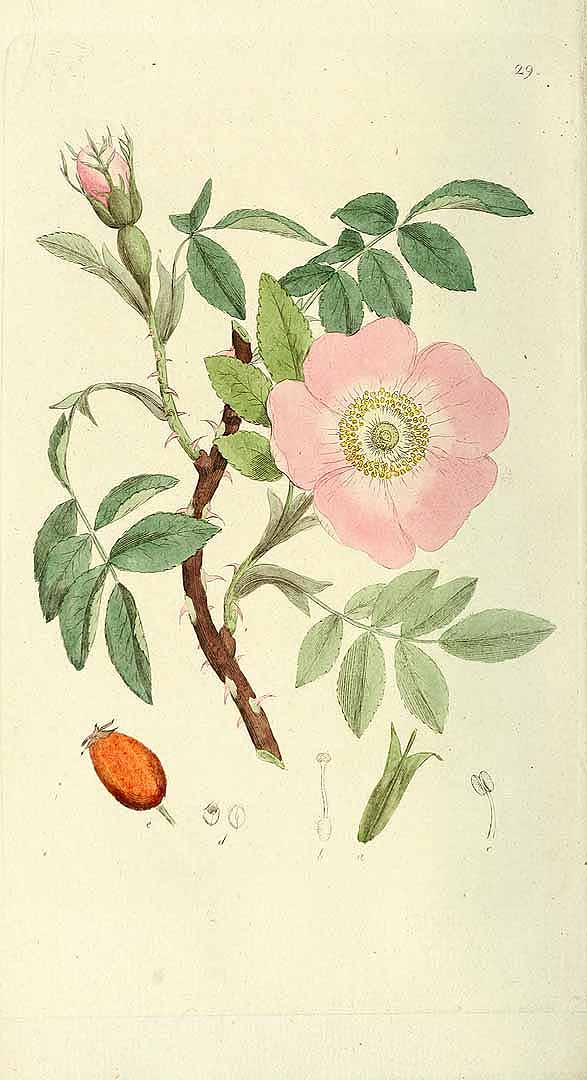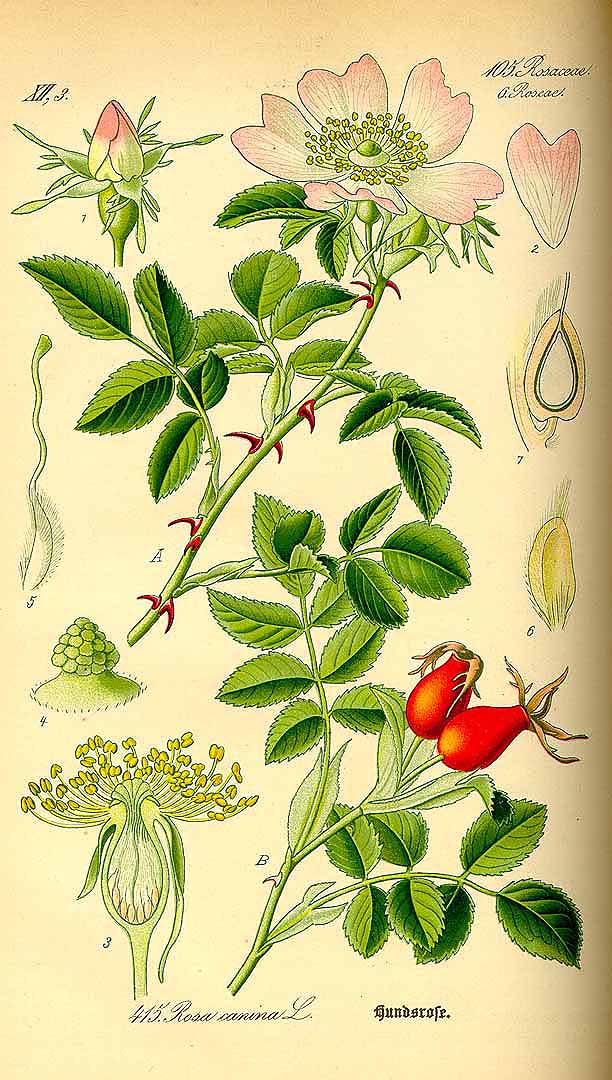! Nouveau site ici !
Vita > Plantae > Magnoliophyta > Magnoliopsida > Rosales >
Rosaceae > Rosa
Rosa canina
(Églantier)



 | *** - ***
| *** - ***
Vita > Plantae > Magnoliophyta > Magnoliopsida > Rosales >
Rosaceae > Rosa
Rosa canina
(Églantier)

Un arbuste rampant épineux. Il développe des drageons. Il atteint 3 m de haut et 3 m de large. Les tiges sont épineuses. Les feuilles sont opposées et ont des folioles le long de la tige. Les feuilles ont 5... (traduction automatique)
→suite
⬀
Le  donne accès au menu
donne accès au menu (c'est votre point de repère) 😊 ;
En dessous vous avez la classification, à partir de la vie (Vita, premier rang) jusqu'à la classe au dessus de la plante, dont vous trouvez ensuite le nom scientifique/botanique (latin) puis le nom commun (français), le cas échéant ;
C'est aussi un lien vers la fiche complète (tout comme la ✖, en bas à droite, et le +, en dessous de la description) ;
Vient alors l'illustration (ou ce qui la remplace, en attendant), la comestibilité :
Et en bas
⬂





